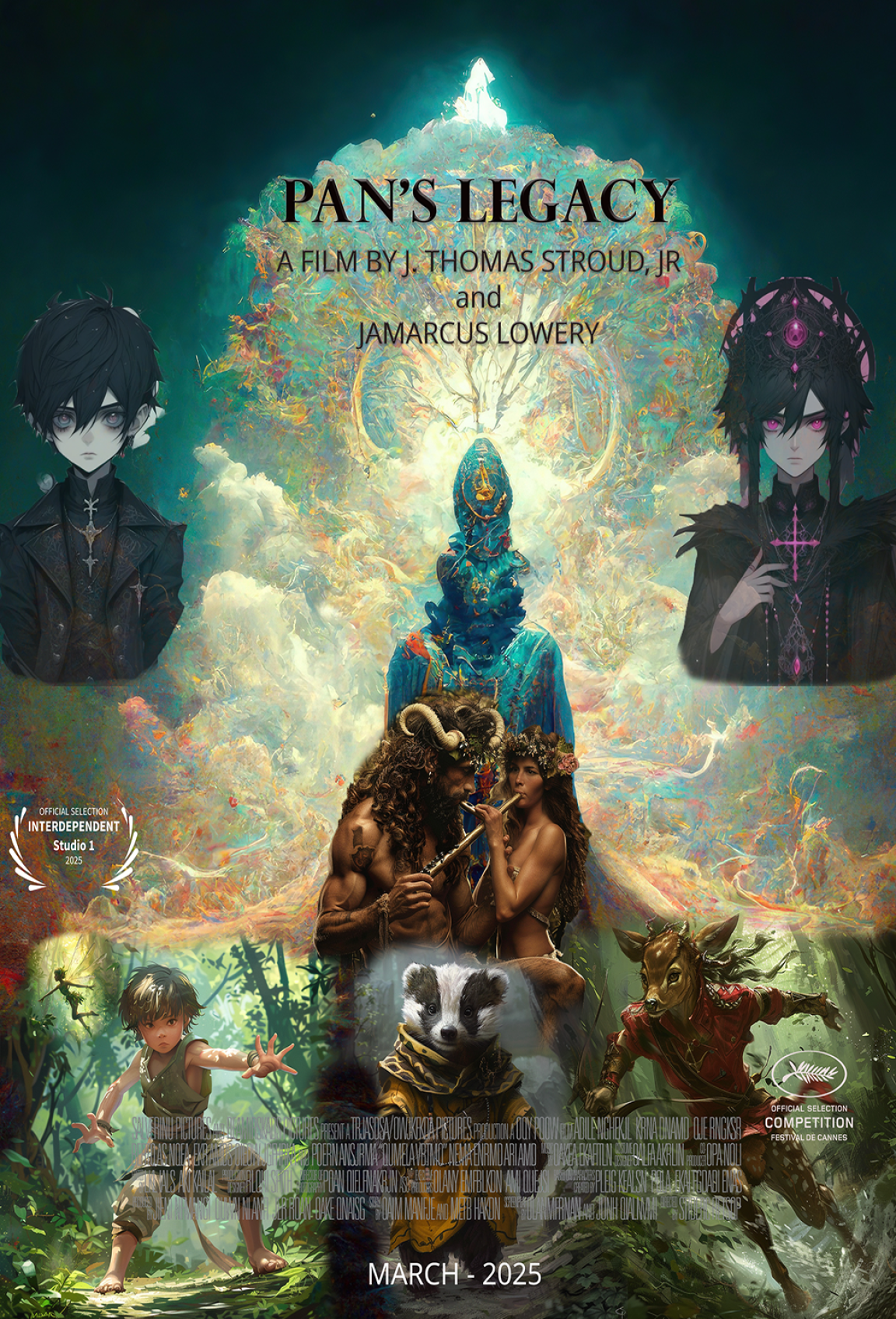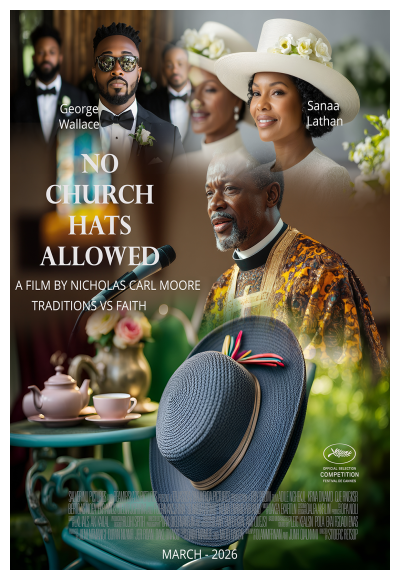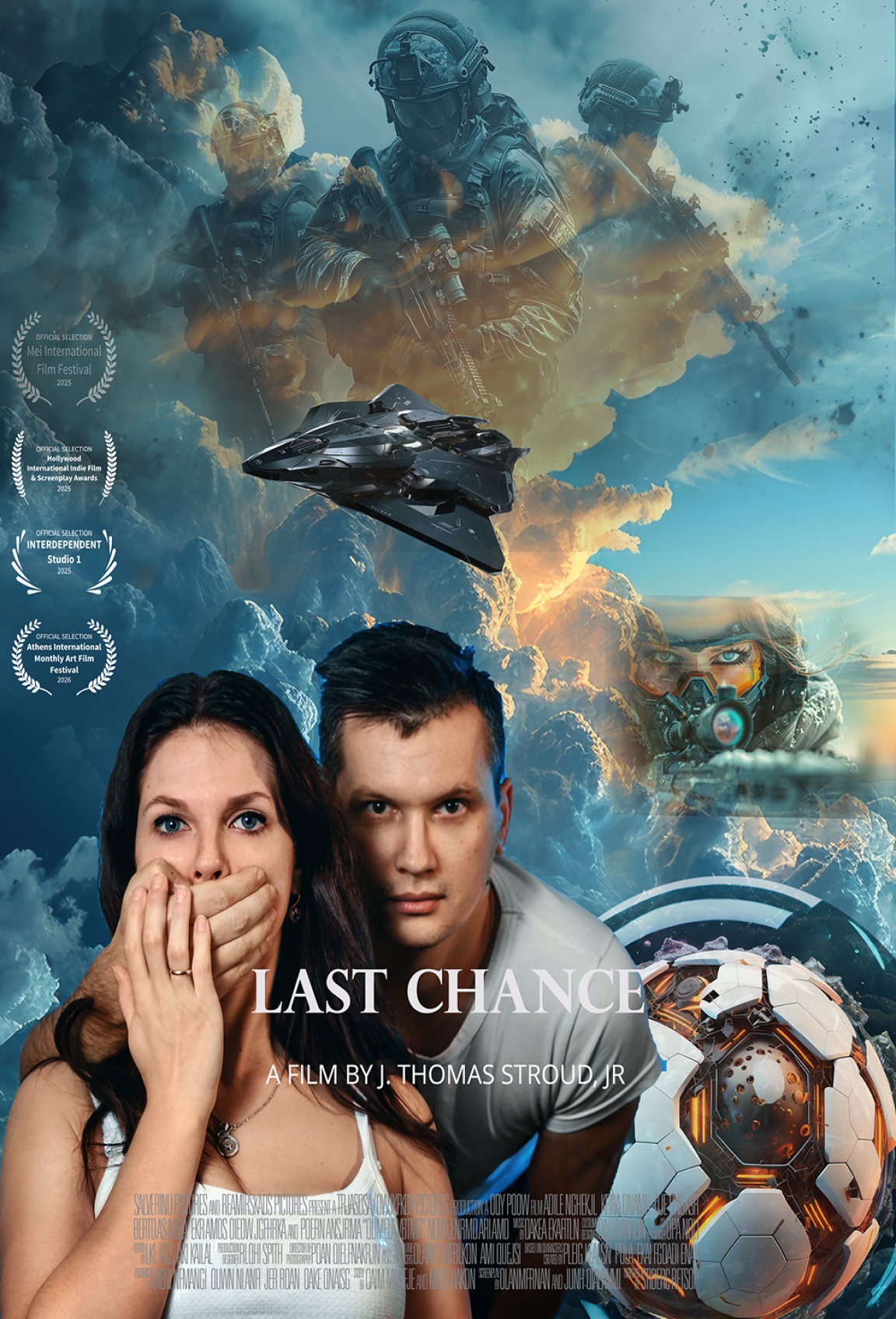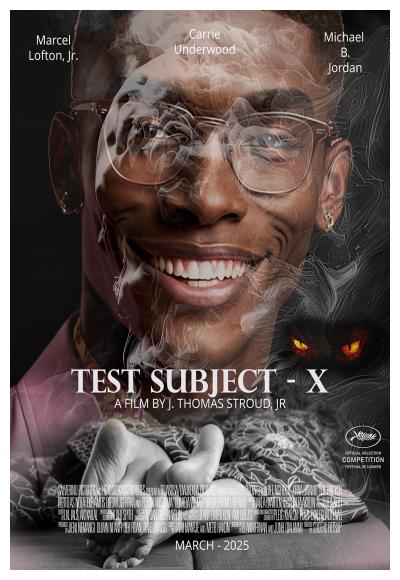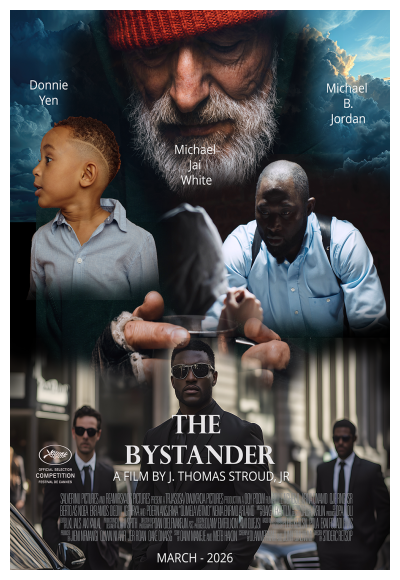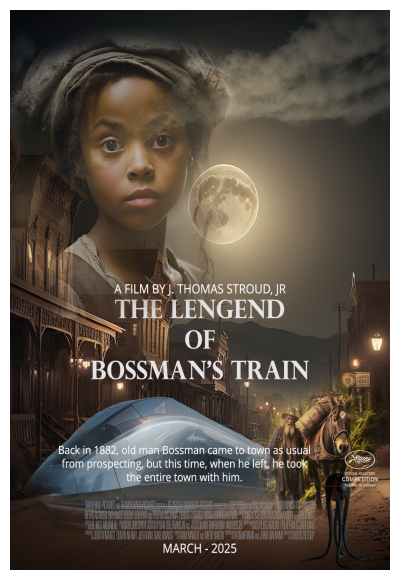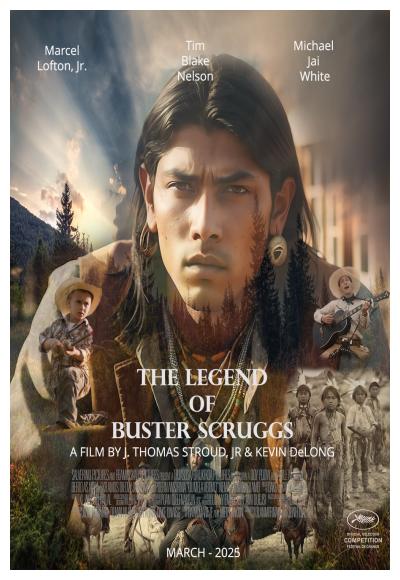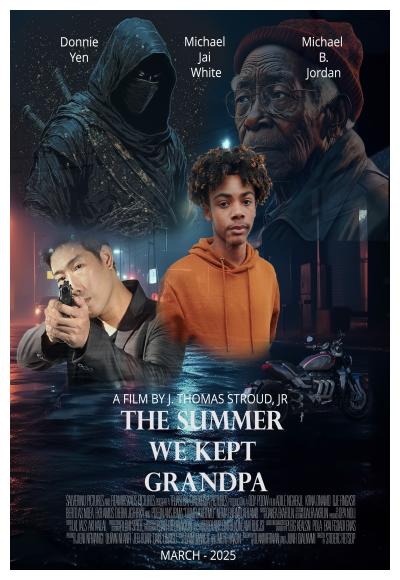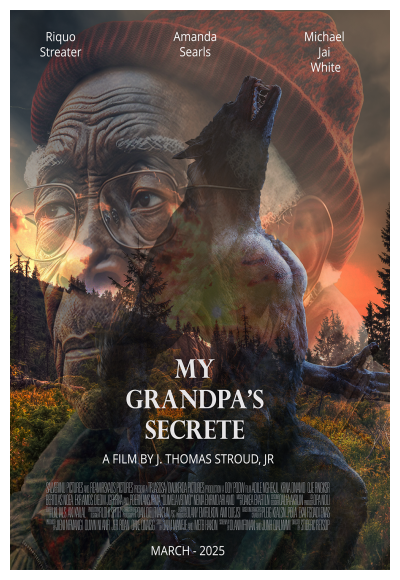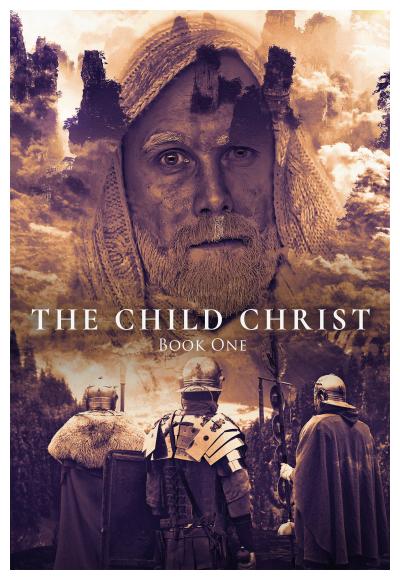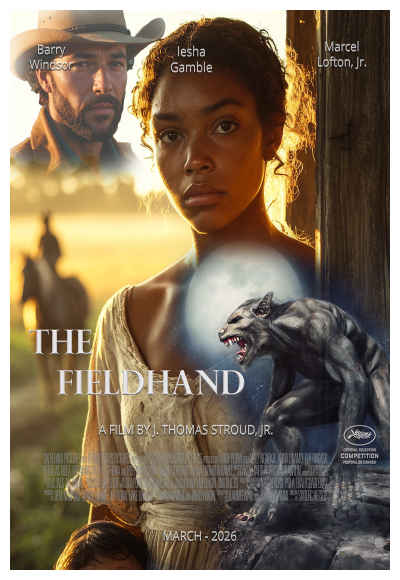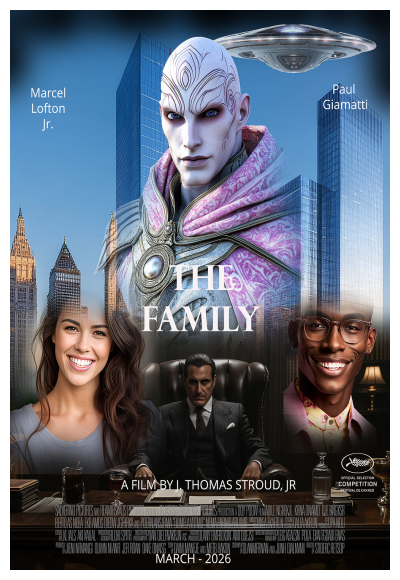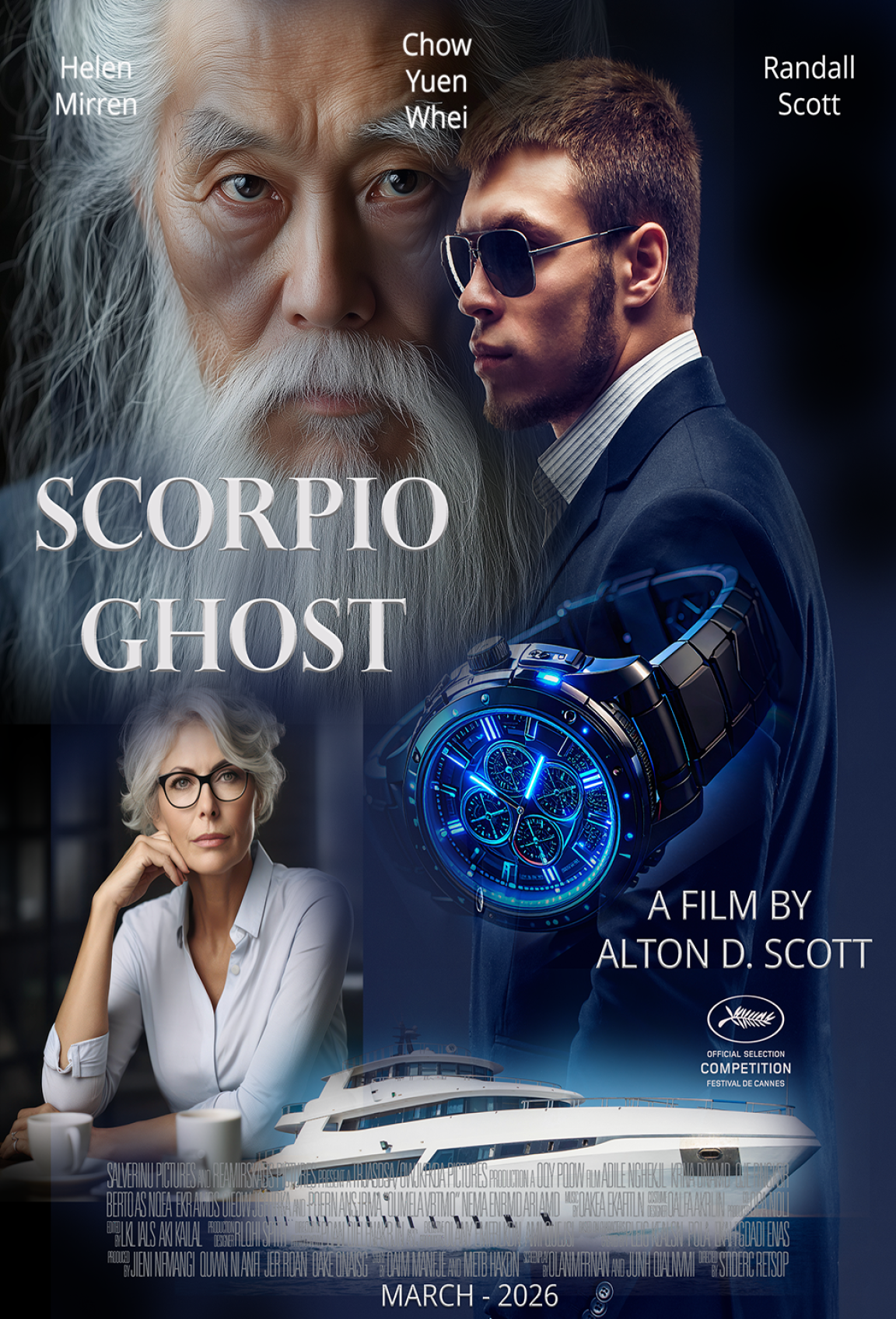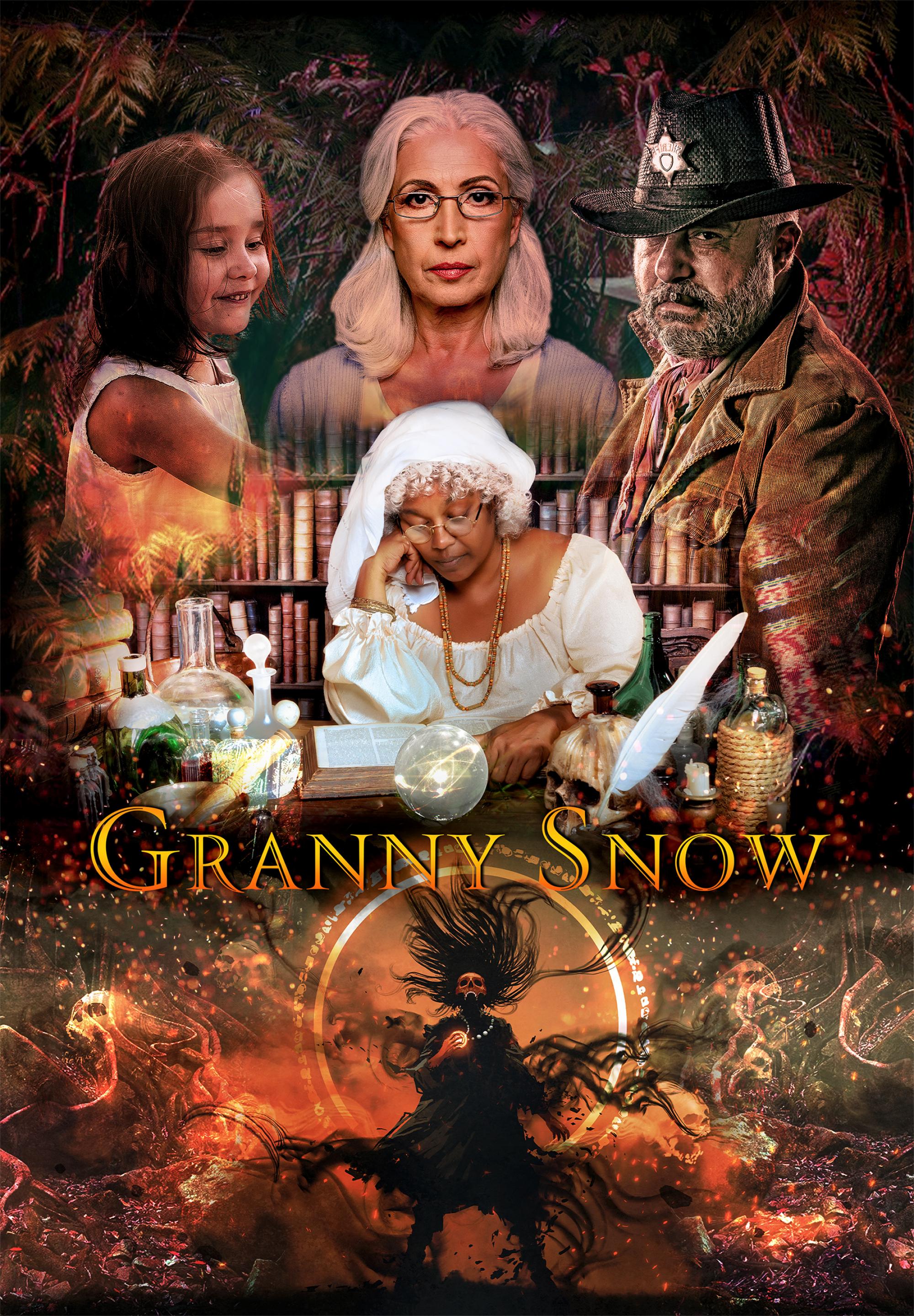
Synopsis/Details
All Accolades & Coverage
Coverage Report by Nolan Filmmaker's Studio
LOGLINE:
When a mother-daughter paranormal YouTube team unwittingly unleash an ancient, malevolent entity from a haunted artifact, their lives—and the lives of those around them—are plunged into terror as the unleashed demon preys on their family and community. Desperate to save her loved ones, the estranged, rational older sister must seek the help of a reclusive, centuries-old mystic in the deep woods of South Carolina, forcing her to confront supernatural forces and sacrifice everything before the evil consumes them all. If they fail to reseal the entity, it will not only destroy their family but unleash devastation on the world beyond.
OVERALL IMPRESSION:
**Impression of Granny Snow – Script Analysis**
"TITLE" displays a rich, ambitious horror-fantasy narrative that merges Southern Gothic folklore with modern supernatural thriller elements. From the opening, the script grounds its world with strong sensory detail, immediately establishing a vivid sense of place and an atmosphere thick with dread and mystery. Structurally, the story follows a classic three-act approach, with an inciting incident (the opening of the Ghost Bag), a rising sequence of supernatural events, and a climactic spiritual confrontation. This aligns well with Robert McKee’s emphasis on causality and escalation, as well as Blake Snyder’s “Save the Cat” beat sheet, particularly in its clear setup, catalyst, and
break-into-act transitions.
Character development is a particular strength. The ensemble cast—ranging from the resourceful Sybil and the guilt-ridden Ann to the enigmatic Granny Snow—each undergo meaningful arcs or revelations, with personal stakes clearly tied to the supernatural threat. Their flaws and relationships are explored through both action and dialogue, echoing John Truby’s focus on moral need and transformation. Granny Snow, in particular, stands out as a mythic mentor figure who subverts expectations, imbuing the story with both wisdom and world-weary cynicism.
Pacing is generally strong, with alternating scenes of tension, horror, and character-driven reprieve. However, the script’s breadth—its wide cast, shifting locations, and extensive exposition—sometimes dilutes the immediacy of the threat, particularly in the second act. Occasional tightening or consolidation of scenes could amplify suspense and emotional engagement, ensuring that the stakes remain front-and-center.
Emotionally, the script delivers genuine pathos, especially through themes of family, sacrifice, and the consequences of curiosity. The horror is not just physical but existential, with the protagonists forced to question their beliefs and confront their own limitations. The Southern folklore and the concept of the Nethervoid lend the work a mythic resonance, likely to appeal to fans of supernatural horror seeking depth and originality.
Adhering to effective storytelling techniques, "TITLE" offers clear goals, escalating obstacles, and a satisfying (if bittersweet) resolution. Its multi-generational and multicultural cast, as well as its blend of contemporary and folkloric horror, give it strong audience appeal. To reach its full potential, further focus on streamlining exposition and maintaining narrative momentum would enhance both its accessibility and impact. Overall, "TITLE" is a compelling, evocative script that rewards the reader with both scares and substance.
SYNOPSIS:
Granny Snow, The Mage of Chesterfield County
**Synopsis**
Granny Snow is a supernatural thriller that weaves together Southern folklore, family bonds, and the dangers of meddling with the unknown, unfolding across the haunted woods of South Carolina and the quiet suburbs of Connecticut.
The story opens in the deep woods of Chesterfield, South Carolina, where the Yates family lives in wary harmony with the supernatural. Little Addie Yates, her mother Lera, and father Denny are watched over by Granny Snow, a centuries-old guardian and mage with ties to the mysterious "Kindred"—creatures akin to Sasquatch—who protect the land and its chosen people.
Parallel to this, in New Haven, Connecticut, Ann Slater and her daughter Kim, hosts of a YouTube paranormal channel, return home from New Orleans with a “Ghost Bag”—an artifact rumored to imprison a spirit. Ignoring warnings, they open the bag on camera, inadvertently unleashing Shaka, a powerful, ancient Djinn who feeds on souls and brings chaos wherever he is freed. The entity’s presence manifests in terrifying supernatural events, beginning with Ann and Kim’s violent possession and spreading to their neighbor, young Chrissi Reed.
As the horror escalates—marked by poltergeist attacks, possessions, and inexplicable illnesses—Ann’s estranged sister Sybil, a pragmatic scientist, is drawn into the crisis. Teaming up with her ex-husband Don, parapsychologist Vincent Toronado, and Pastor Willoughby, Sybil investigates the origins of the Ghost Bag. Their search leads them to Chesterfield and the enigmatic Granny Snow, whose initial reluctance to help underscores the story’s theme of responsibility and consequence.
Granny Snow, revealed as an Elder of the Nethervoid (a dimensional guardian), explains that Shaka’s release endangers not just Ann’s family but the entire region. The entity’s power grows as he feeds, threatening to plunge the world into darkness. When Shaka steals Granny’s Soul Orb—her husband’s spirit and source of power—the stakes become existential.
The final act is a race against time. Granny, Sybil, Don, and their allies return to Connecticut to confront Shaka, culminating in a supernatural showdown. Granny and Sybil, with the help of the Kindred and the Soul Orb, battle Shaka in both the physical world and the Nethervoid. Don sacrifices himself to protect Sybil, and in a climactic act of selflessness, Granny and Sybil (now spiritually united) channel their combined power to destroy Shaka, sacrificing themselves and the Soul Orb to save the others.
The aftermath sees Ann and Kim miraculously recover, free from Shaka’s influence, while those touched by the supernatural are forever changed. The Kindred and Granny’s legacy endure, and Sybil’s spirit finds peace, continuing to watch over the land as “Granny Sybil.”
*TITLE* follows the “Save the Cat!” structure, with clear inciting incidents, midpoint revelations, and a “dark night of the soul” before the redemptive climax. The narrative arc, as outlined by Robert McKee’s “Story,” is driven by escalating stakes, moral choices, and the emotional transformation of its characters—especially Sybil, who evolves from skeptic to self-sacrificing hero. John Truby’s principles are evident in the integration of character and plot: family, community, and the unseen world are inseparable, and every choice has consequences. The hero’s journey, per Christopher Vogler, is embodied in the crossing of thresholds, supernatural mentors, and the ultimate return with new wisdom.
Ultimately, Granny Snow is a chilling, heartfelt tale of reckoning with the past, honoring the guardians of tradition, and the enduring power of sacrifice and family in the face of ancient evil.
COMMENTS:
**Script Analysis: “Granny Snow”**
---
### OVERALL STORY STRUCTURE
Drawing from the frameworks of Robert McKee’s *Story*, Blake Snyder’s *Save the Cat*, and John Truby’s *The Anatomy of Story*, “TITLE” presents an ambitious supernatural horror narrative with significant mythological and emotional scope. The story unfolds in classic three-act structure—with multiple subplots interwoven—yet at times suffers from overextension and tonal whiplash due to its sprawling cast and mythic scale.
**Act One** is robustly established, using atmospheric detail to anchor us in the rural South and introducing the Yates family. The transition into Ann and Kim Slater’s storyline in Connecticut/New Orleans is handled with brisk pacing, quickly establishing the “Ghost Bag” as the inciting incident (Snyder’s “catalyst”). The script adheres to Truby’s advice to “start strong”; tension is immediate, and the stakes are clear.
**Act Two** escalates the supernatural threat and expands the narrative to include a large ensemble (Sybil, Don, Monica, Vincent, Pastor Willoughby, Granny Snow, and others). Multiple locations (Connecticut, South Carolina, Louisiana) are introduced, stretching the story’s focus. The midpoint is marked by the unleashing of Shaka and the repercussions that ripple through both the Slater and Yates families.
**Act Three** delivers a genre-appropriate climax: Granny Snow’s confrontation with Shaka and ultimate sacrifice. The denouement ties up both supernatural and emotional threads, providing closure for main characters, albeit with a sudden epilogue leap that may feel abrupt.
**Strengths:**
- The script displays a clear progression of stakes, with rising action and multiple reversals.
- Act breaks are generally well-timed, with cliffhangers and new revelations prompting forward momentum.
- The dual settings (urban paranormal enthusiasts vs. rural ancestral magic) create a strong contrast and theme.
**Areas for Improvement:**
- The narrative is at times unwieldy, with an abundance of supporting characters and mythologies introduced late in the game (e.g., Boberon/Sasquatch, Dogman, Kindred, Soul Orbs, Nethervoid, Djinn).
- Climax and resolution risk feeling rushed due to the sheer volume of plot and lore, undercutting some emotional payoff (Truby’s “unity of effect” is diluted).
---
### CHARACTER DEVELOPMENT
Following McKee’s and Truby’s emphasis on need, desire, and transformation, “TITLE” furnishes each protagonist with compelling needs: Ann and Kim crave adventure and recognition, Sybil seeks to protect her fractured family, while Granny Snow carries the burden of ancient protector.
**Noteworthy Arcs:**
- **Granny Snow** is the script’s most memorable character, blending archetypal mentor and enigmatic
force-of-nature. Her backstory is revealed piecemeal, satisfying Truby’s “revelation of weakness and need.” Her final self-sacrifice is earned and impactful.
- **Sybil** is given a clear emotional arc: a scientist forced to confront the supernatural, culminating in her ultimate
sacrifice for her family.
- **Ann and Kim** begin as thrill-seeking YouTubers and are transformed by trauma and the consequences of their curiosity—though their motivations and personalities could benefit from sharper distinction.
- **Supporting Cast** (Vincent, Don, Monica, Pastor Willoughby) are generally sketched with clear functions, but risk blending together due to limited internal conflict or unique voice.
**Weaknesses:**
- Some characters (e.g., Lera Yates, Denny Yates, Addie, Monica) are underdeveloped, functioning primarily as plot devices.
- Antagonist Shaka, while menacing, is mostly a force-of-nature rather than a nuanced villain—his motivations are hinted at, but his personality is underwritten.
- The introduction of numerous mythic creatures (Dogman, Kindred, Soul Orbs) is intriguing, but their presence sometimes overshadows the human drama.
---
### DIALOGUE QUALITY
Per McKee, dialogue should reveal character and subtext; “TITLE” is often effective here, especially with Granny Snow, whose lines are rich with personality and regional wisdom. The Southern dialect and turns of phrase (“Chile,” “you mind your manners now”) add authenticity.
**Strengths:**
- Granny Snow’s dialogue is distinctive and layered, conveying centuries of wisdom and a dry sense of humor.
- The banter between Ann and Kim is believable and grounds the paranormal premise in reality (“Wait up, Mom, my shorts are coming down”).
- Expository dialogue is often disguised through character interaction and conflict (e.g., Sybil’s skepticism, Vincent’s theories).
**Weaknesses:**
- Monologues (especially Granny’s) sometimes become didactic, slowing pace and risking a “lore dump.”
- Secondary characters’ voices are less distinct; at times, lines are interchangeable or overly functional.
- The script occasionally leans on “telling” rather than “showing” (Truby’s principle), especially when explaining the mythos.
---
### PACING
“TITLE” maintains brisk pacing in its first half, propelled by immediate threats and mysteries surrounding the Ghost Bag. The script’s midpoint and second act, however, slow under the weight of exposition and side quests (e.g., travel, research, meeting multiple experts, local color vignettes).
**Strengths:**
- Effective use of cross-cutting between locations and characters in peril.
- Early scenes deploy horror set pieces with escalating suspense and pay-off (the bag opening, supernatural attacks).
- The introduction of new threats (Shaka, Dogman, Kindred) keeps the sense of danger fresh.
**Weaknesses:**
- The story’s expansion in scope (multiple states, large ensemble, heavy mythology) leads to a bloated middle that threatens momentum.
- The climax, while visually imaginative, is rushed and at times hard to follow due to the number of simultaneous supernatural events.
- The denouement (return to normalcy and funerals) feels tacked on, lacking emotional breathing room.
---
### EMOTIONAL IMPACT
*Save the Cat* prioritizes “heart”—the audience must care about the characters. “TITLE” succeeds most when focusing on the family dynamics: Sybil’s devotion, Ann and Kim’s vulnerability, Granny’s reluctant mentorship. The stakes are personal as well as cosmic, and the script doesn’t shy from tragedy (notably Vincent’s death, Sybil’s sacrifice).
**Strengths:**
- The horror elements are grounded in relatable fears: loss of family, consequences of reckless curiosity, being out of one’s depth.
- Granny Snow’s arc provides a sense of ancient sorrow and weariness, heightening the sense of loss.
- Occasional moments of warmth (Ann and Kim’s banter, Granny’s care for Addie and Boberon) offset the darkness.
**Weaknesses:**
- The sheer density of mythology and action sometimes overshadows the characters’ inner lives; more “quiet” scenes to process trauma would deepen empathy.
- The violence (especially supernatural sexual assault) is graphic and may alienate some viewers—consider the balance between shock and emotional resonance.
- The ending, with sacrifice and death, is affecting, but the epilogue's re-settling into normalcy feels abrupt given the preceding cosmic spectacle.
---
### ENGAGEMENT WITH INTENDED AUDIENCE & STORYTELLING TECHNIQUES
“TITLE” is squarely targeted at audiences of supernatural horror and urban legend, with flourishes reminiscent of
*Stephen King*, *The Conjuring* universe, and *Lovecraftian* mythos. The script leverages “mystery box” techniques (Abrams), slow-burn horror, and a blend of folklore and modern skepticism.
**Adherence to Storytelling Principles:**
- The script respects genre conventions: ordinary people, ancient evil, escalating threat, and a sacrificial mentor.
- The use of regional folklore and multi-generational legacy is a fresh angle, adding authenticity.
- However, it risks violating the “unity of effect” (Poe/Truby) by overstuffing its world. A more focused approach—per- haps trimming supporting cast or streamlining lore—would sharpen the emotional and thematic core.
---
### FINAL THOUGHTS & RECOMMENDATIONS
**Strengths:**
- Vivid sense of place; cultural specificity (Southern, Indigenous, and African mythologies) is a selling point.
- Memorable central character (Granny Snow) and a satisfying mythic arc.
- Moments of genuine horror and warmth.
**Areas for Improvement:**
- Too many characters and mythologies create narrative clutter. Consider tightening the focus—whose story is this at its heart? Sybil’s, Granny’s, the Slater family’s?
- Expository dialogue and lore dumps could be dramatized or visualized more effectively.
- Some supernatural events are hard to visualize on screen; consider how these would be staged cinematically.
- The emotional aftermath for surviving characters, especially Ann and Kim, could be more deeply explored.
**Overall, “TITLE” is an ambitious, atmospheric horror epic with genuine mythic resonance. With judicious tightening and a greater focus on its core emotional journey, it could become a standout entry in the modern supernatural horror canon.**
SCORE: 1 out of 5
Type Score Comment
Concept 5 The script presents a highly original and ambitious supernatural thriller/horror concept, blending Southern folklore, modern paranormal investigation, and cosmic mythos. The inclusion of a centuries-old guardian, indigenous lore, and a demon/djinn antagonist sets it apart from typical haunted object stories. The stakes escalate from personal to apocalyptic, and the world-building is rich and immersive.
Story 4 The narrative is complex, weaving together multiple timelines, locations, and character arcs. The story begins with a grounded, atmospheric horror setup and expands into an epic battle between good and evil, with strong thematic underpinnings about tradition, responsibility, and the dangers of meddling with the unknown. The plot progression mostly adheres to Save the Cat beats (Opening Image, Catalyst, Debate, Break into Two, Midpoint, Bad Guys Close In, All Is Lost, Finale), and the story structure is robust. However, the sheer volume of events and characters occasionally risks overwhelming the reader, and some transitions between set pieces could be streamlined for clarity.
Characters 4 The script offers a diverse and memorable cast: Ann and Kim as relatable modern protagonists, Sybil as the skeptical scientist, Granny Snow as a unique and powerful mentor/guardian, and supporting characters with distinct voices and motivations. The antagonist, Shaka, is suitably menacing with a mythic backstory. Some secondary char- acters (e.g., Vincent) are less developed, and a few emotional beats could be deepened, but overall, character work is strong, with clear arcs and stakes.
Dialogue 4 Dialogue is generally naturalistic and effective at conveying character, regional flavor, and exposition. Granny Snow’s speech patterns and wisdom are particularly well-drawn, and the script balances humor, tension, and pathos. Some exchanges, especially in exposition-heavy scenes, could be tightened to avoid repetition and maintain pacing, but the dialogue supports both character and world-building.
Structure 4 The structure follows classic story architecture, with clear acts, rising stakes, and a climactic confrontation. Save the Cat moments (e.g., Addie and Boberon, the Ghost Bag opening, the 'All is Lost' moment with Ann/Kim) are present, and the script incorporates McKee’s turning points and Truby’s moral argument (the cost of curiosity and the value of tradition). The script is long and episodic, which could challenge production, but the overall structure is sound and supports the epic scope.
Pacing 3 While the story is gripping and rarely dull, the pacing is uneven. The first act is methodical- ly atmospheric, but the middle and later acts become dense with action, exposition, and new characters. Some sequences (e.g., travel logistics, extended supernatural battles) could be condensed to maintain narrative momentum. The script would benefit from tightening to keep the audience fully engaged throughout.
Catharsis 4 The script delivers a powerful catharsis, particularly through Sybil’s sacrifice, Granny Snow’s final confrontation, and the restoration of the family. The emotional stakes are high, and the ending provides both closure and a sense of legacy. Some character deaths and transformations (e.g., Vincent, Don) are impactful, though a few moments could be further mined for emotional resonance.
Originality 5 The script stands out for its fusion of Southern Gothic, indigenous myth, cosmic horror, and contemporary paranormal tropes. The mythology (Nethervoid, Soul Orbs, Boberon’s

